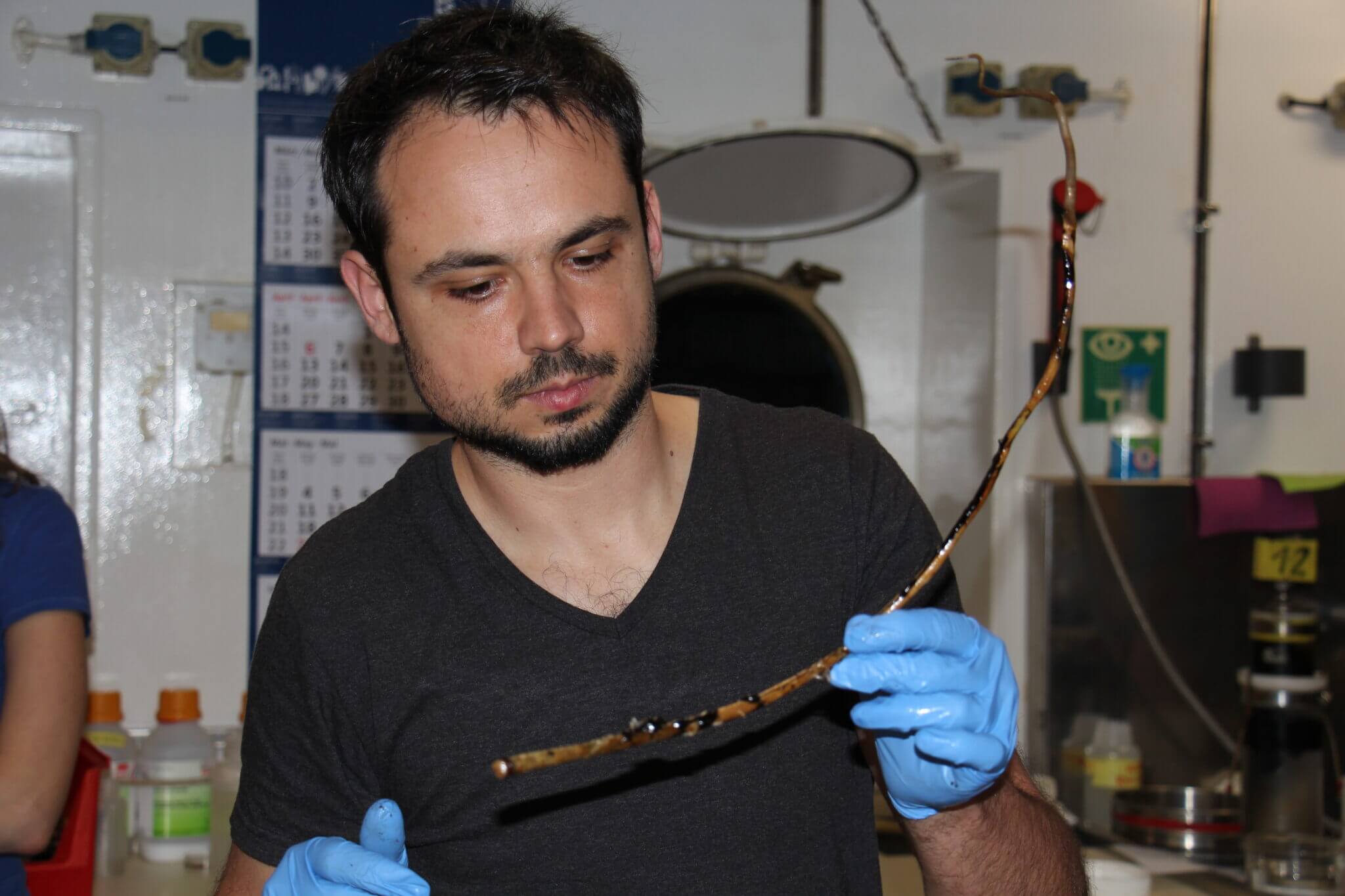Symbiosis with bacteria allows worms and oysters to feed on natural gas and sulfur compounds - and teaches us about ways to produce energy

A research robot that dives to a depth of one kilometer in the Mediterranean Sea reveals to us a hidden world, full of surprises. Sunlight does not penetrate these depths, and plants cannot carry out photosynthesis there. Still, there is life in them. "The creatures that live in the depths are very different from anything we are familiar with," says Dr. Maxim Rubin-Bloom from the Sea and Lake Research Institute in Haifa. "You could say it's the closest thing to life from another planet."
In 1977, geologist Robert Ballard discovered hydrothermal vents - hot water coming out of cracks in the sea floor. These eruptions are also called "black smokestacks" - underwater volcanoes that emit hot water and toxic and hot gases, mainly sulfur compounds. Surprisingly, this toxic environment turned out to be teeming with life, including giant worms called Riptia (Riftia), whose length reaches one and a half meters.
This giant worm is the fastest growing invertebrate known to man - it reaches its full size in just two years. It achieves this rapid growth without a digestive system: the digestive system of the Riftia degenerated during evolution, and it is completely dependent on the supply of food from symbiotic bacteria living in a special organ in its body. In each cell of this organ, called a trophosome, live bacteria of one particular species, which produce energy from inorganic chemical compounds. This process is called chemosynthesis (on the weight of "photosynthesis"). In this case, the energy is produced from sulfur compounds.
In the eastern part of the Mediterranean Sea there are no hydrothermal vents, but there are vents of natural gas, and it turns out that they also support an environment rich in life. These animals also inhabit their bodies with symbiotic bacteria that produce energy from chemical compounds.
Dr. Rubin-Bloom's research group studies these animals in the area opposite Palmahim Beach, at a depth of one kilometer. Humans, of course, cannot dive to such a depth, and the research is carried out using an underwater robot. The research found a fascinating variety of animals, from oysters to worms of the genus Malibarchia (Lamellibrachia), relatives of the giant Riftia - although smaller than it, but reaching an age of tens and hundreds of years.
The bodies of all these animals contain symbiotic bacteria, some of which feed on sulfur compounds and some of which actually feed on natural gas. The study of these bacteria reveals a small chemical industry: in a certain species of small clams six (69) different species of symbiotic bacteria were found, each of which utilizes a different energy source.
Hybrid bacteria
The bacteria are also able to fix carbon in different ways. Most bacteria and plants fix carbon from carbon dioxide in a metabolic cycle called the Calvin cycle; This circuit is wasteful in energy, but capable of operating well even in a high-oxygen environment. Other metabolic pathways fix carbon more efficiently, but do not function in an oxygenated environment.
The bacteria living in symbiosis with the worm Lemlibrachia are among the few bacteria in the world that are able to fix carbon in both ways, depending on the environmental conditions: when the percentage of oxygen in the environment is high, they use the Kelvin cycle, and when the percentage of oxygen is low, they use alternative cycles. In this they are similar to a hybrid vehicle, equipped with two engines - a gasoline engine and an electric engine, each of which is at its best under different conditions. Dr. Rubin-Bloom - with the help of a research grant from the National Science Foundation - was able to grow this type of bacteria in the laboratory, an important step in the study of these intriguing metabolic circuits.
A question of loyalty
The giant worm Riftia lives in symbiosis with one and only one species of bacteria; A certain oyster has six; Lamellibrachia, the animal in the gas springs, has two different species of symbionts. What can be learned from the degree of exclusivity or mutual loyalty of the symbiont and the host?
A situation of one host and one symbiont is stable; In contrast, two symbiotic bacterial species competing for space and resources seemingly create an unstable situation. To make it stable, an abundance of resources is needed, so that the two symbionts live comfortably and do not compete with each other - and this may indeed be the case. A bioinformatic study of the bacteria, meaning the study of their DNA and protein sequences, may reveal to us when complete fidelity between a single host and a single symbiont is the most appropriate and stable situation, and when a stable balance can be created between several symbionts.
"Such simple systems - a worm and two species of bacteria - can serve as a research key to understanding much more complex systems, such as the vast diversity of our gut bacteria," says Dr. Robin-Bloom. "In order for us to continue to explore the wonderful world of creatures that feed on natural gas in the depths of the sea, about their biochemistry and unique relationships, we must protect it from the damages of the energy and fishing industries. These days, discussions are taking place on the establishment of an underwater reserve in front of the Palmachim beach."
Life itself:

Dr. Maxim Rubin-Bloom collected insects as a child. Today, following the widespread extinction of insects due to human activity, he prefers not to impale insects on pins, but to photograph them.
More of the topic in Hayadan:
